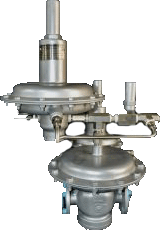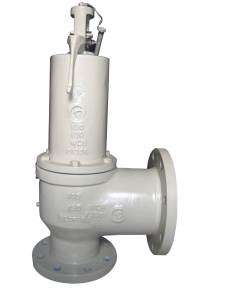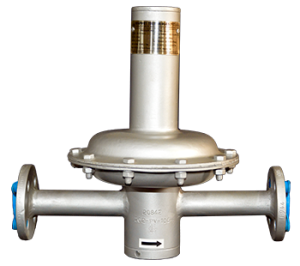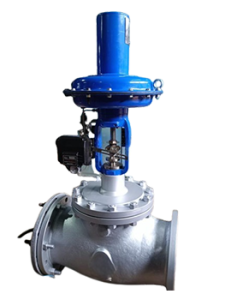Water pressure tanks are extremely important in ensuring a consistent and effective supply of water to homes, farms, and industries. If you have ever asked yourself how water supplies constantly from your taps or why your water pump doesn’t turn on and off repeatedly, the secret lies in how a water pressure tank works. These tanks not only provide a constant water supply but also shield your water system from repeated pump cycling damage. In this article, we shall discuss how water pressure tanks function, why they are necessary, and what advantages they provide. We shall also give some real-life examples to make it easier for you to understand their significance.
What is a Water Pressure Tank?
A water pressure tank is a storage tank that keeps water pressure in a water system by storing a reserve of pressurized water. It stops the pump from switching on and off continuously, thus prolonging the life of the pump and providing a constant water pressure. Such tanks are typically employed in well systems but also appear in residential, commercial, and industrial water systems.
How Do Water Pressure Tanks Work?
Water pressure tanks function on a basic principle that incorporates air and water. The tank has two primary elements: water and compressed air. Below is a step-by-step explanation of how they function:
Filling the Tank: When water is filled into the tank, it compresses the tank’s air. As water continues to flow in, the air pressure builds up.
Maintaining Pressure: As the air pressure rises, it presses against the water, balancing it. Pressure is kept at a certain range, typically 40 to 60 psi (pounds per square inch), depending on system settings.
Usage of Water: When a water outlet or faucet is turned open, the pressurized air forces the retained water out of the tank and into the pipes, ensuring there is consistent water pressure.
Activation of Pump: When the water level in the tank falls to a specific level (the cut-in pressure), the pump comes on to recharge the tank and replenish the water level. When the water is at the cut-off pressure, the pump turns off to avoid unnecessary cycling.
Types of Water Pressure Tanks
There are three primary types of water pressure tanks, each with distinct characteristics:
Bladder Tanks: These tanks utilize a rubber bladder to divide water and air. Upon water filling, the bladder stretches, pushing air and keeping it under pressure. They are efficient and minimize the danger of waterlogging.
Diaphragm Tanks: Just like bladder tanks, diaphragm tanks possess a flexible membrane separating water and air. They are rugged and maintain constant performance throughout.
Air-Over-Water Tanks: In these older systems, air and water freely mix within the tank. They need constant maintenance to prevent air loss and keep pressure, which reduces them from being as efficient as today’s bladder and diaphragm tanks.
Why Are Water Pressure Tanks Important?
Water pressure tanks are responsible for sustaining the efficiency and lifespan of a water system. Here’s why they are important:
1. Prevents Frequent Pump Cycling
Without a pressure tank, the pump would have to start every time there is a usage of water, creating frequent cycling. This repeated on-off cycling can shorten the lifespan of the pump. A pressure tank holds water and minimizes pump operation, prolonging the lifespan of the pump.
2. Provides Constant Water Pressure
A pressure tank ensures that water flows smoothly and continuously, irrespective of variation in water use. This is particularly vital in homes with many outlets for water, where pressure is lost when several taps or appliances are used at the same time.
3. Increases Energy Efficiency
Since the pump does not need to turn on very often, less energy is used. This means lower electricity bills and less wear and tear on the system.
4. Prevents Water Hammering
Water hammering takes place when water suddenly halts or alters its direction, which results in a banging sound inside the pipes. Pressure tanks absorb the shock and avoid these rapid changes in the flow of water, which guards the plumbing system.
Real-World Example: Water Pressure Tank in a Residential Home
Let’s assume that there is a family residing in a suburban residence with a private well system. Without a pressure tank, the well pump would have to be turned on every time a person flushed the toilet, washed dishes, or took a shower. All this cycling would not only raise the electricity bill but also lower the pump’s lifespan. With the installation of a pressure tank, the system holds pressurized water that can be utilized without having to turn on the pump every time. This results in a quieter, more efficient system and prevents the need for costly pump repairs.
Signs That Your Pressure Tank Needs Attention
Even the best pressure tanks require regular maintenance. Here are a few signs that your tank may need servicing:
Inconsistent Water Pressure: If water pressure fluctuates frequently, it may indicate an issue with the pressure tank.
Frequent Pump Cycling: If the pump is cycling on and off too frequently, it may be a sign that the tank is losing air or the bladder/diaphragm is ruptured.
Waterlogging: If air within the tank leaks out, the tank will become waterlogged, making it less efficient.
Checking the air pressure regularly and testing the tank for leaks can avoid these problems.
How to Choose the Right Water Pressure Tank
When choosing a water pressure tank, take the following into consideration:
Tank Size: Select a tank size appropriate for your home’s water usage. Bigger tanks store more water, cutting down on pump cycling and increasing the pump’s lifespan.
Material and Construction: Opt for long-lasting tanks with corrosion-resistant materials, particularly if your water contains high mineral levels.
Pressure Settings: Make sure the tank’s pressure range matches your pump’s settings to prevent mismatched performance.
Conclusion
Pressure tanks for water are critical to ensuring a smooth and efficient water supply system. Through preventing excessive pump cycling, ensuring uniform water pressure, and enhancing the system’s overall efficiency, they help extend the life and performance of your water system. In residential, agricultural, or industrial applications, having a well-maintained pressure tank means that you will have a consistent water supply without costing you your investment in the water pump and plumbing system. Understanding how these tanks work and recognizing the signs of potential issues can save you from costly repairs and ensure that your water system functions smoothly for years to come.





